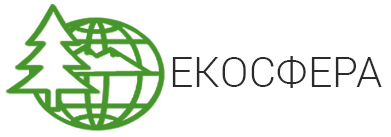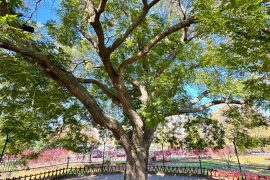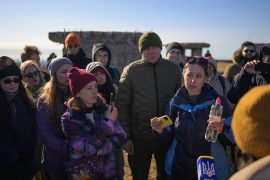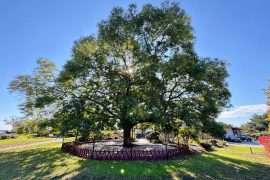The target audience is teachers, students, educators, non-governmental environmental workers. Educational guides of this kind are aimed at helping teachers and educators implement environmental education at school and after-school, using training methods, environmental and role-playing games, environmental studies, as well as teaching in nature.
The main task of environmental education is to form a person with an active civic position on environmental issues. This assignment helps teachers to reach teachers’ suggested manuals.
 УДК 37.033+502.3
УДК 37.033+502.3
ББК 74.200.50+20.1
С 76
Stankevich Oksana, Derevyanchenko Natalia, Stankevich-Koval Katerina. We care about our river! Training materials. – Vol. 1. – Uzhgorod: PE “Lyra”, 2001. – 70 p.
The first volume of the guide contains interesting material for lessons and lessons on environmental topics, games, and tasks to help children understand and participate in environmental issues. Information about the sources and nature of river pollution is presented here, the peculiarities of fauna and flora of fresh water bodies and the nature of their relationships are emphasized, the human impacts on the river as an aquatic ecosystem are considered. Special attention is paid to the formation of ecocentric outlook in children, instilling a love of nature, education of a harmoniously developed personality, responsible and self-thinking.
This material can be used in schools, high schools, lyceums, colleges, and extracurricular educational and educational work with children and young people.
The guide is recommended for teachers, educators, school leaders, and anyone interested in environmental issues.
Reviewer: Verbs IA, Ph.D. Department of Teacher Training Institute.
Proofreader: Derevyanchenko N. O.
ISBN 966-95984-2-7
 УДК 37.033+502.3
УДК 37.033+502.3
ББК 74.200.50+20.1
С 76
Stankevich Oksana, Derevyanchenko Natalia, Stankevich-Koval Katerina. We care about our river! Training materials. – Vol. 2 – Uzhgorod: PE “Lyra”, 2001. – 76 p.
The second volume of the guide contains recommendations for conducting trainings on environmental education and upbringing of student youth, as well as conducting elementary studies of the ecological status of aquatic ecosystems and terrain and chemical analysis of water with the participation of students.
The proposed guide introduces you to the techniques, methods and features of training – an unconventional form of training, the methods of river ecosystems, birds and hydro-biotons, as well as methods of chemical analysis of river water using the portable laboratories of MERCK.
Working in this direction will help to attract students to research and environmental activities, arouse interest in learning, social activity, sociability, self-confidence, will promote the development of leadership qualities of the individual.
The materials in this guide can be useful for teachers of schools, high schools, lyceums, colleges and heads of youth clubs, environmental activists and nature lovers.
Reviewer: Verbs IA, Ph.D. Department of Teacher Training Institute.
Proofreader: Derevyanchenko N. O.
ISBN 966-95984-2-7
 УДК 372.850
УДК 372.850
ББК 74.262.0
С 76
Oksana Stankevich, Kateryna Stankevich-Koval, Natalka Derevyanchenko. Environmental education at school and in extracurricular educational establishments (tutorial on the author’s program on environmental education “SCHOOL IN NATURE”). – Uzhgorod: PE “Lyra”, 2005. – 104 p.
The manual contains materials for lessons, trainings and extracurricular activities on environmental topics. Separate sections of the guide are devoted to wildlife elements, including information on different types of ecosystems and biodiversity; the sources and nature of pollution of water, atmospheric air and global climate change, soil formation and soil pollution by solid household waste and persistent organic pollutants; about genetically modified organisms. Each section is complemented by hands-on activities that help children understand environmental issues and their own role in solving them.
The guide ends with a section containing games and tasks that develop teamwork skills, nurture a sense of camaraderie, and develop a harmoniously developed personality.
Scientific Editor: LM Felbaba-Klushina, Ph.D., Associate Professor of UzhNU.
Language Editor and Proofreader: N. O. Derevyanchenko.
Reviewer: N. F. Gabchak, Ph.D., Methodist, Department of Education, Uzhgorod City Council.
ISBN 966-8266-30-7
 УДК 504.064.4:658.567.1(075)
УДК 504.064.4:658.567.1(075)
ББК 74.262.01я 721
С 76
Stankevich-Volosyanchuk OI, Stankevich-Koval KI Alphabet for solid household waste management (tutorial on author’s program on environmental education “SCHOOL IN NATURE”). – Uzhgorod, 2008. – 52 p.
The training manual is designed to introduce a short training course on solid waste management in schools. The guide contains 10 lessons for middle school children.
The manual outlines the theoretical information needed to understand the subject, as well as sample lessons for each lesson. Performing practical tasks will help children understand the problems of solid waste management and their own role in solving them.
The guide is recommended for teachers who will take this course in schools.
Approved by the Scientific and Methodological Council of the Board of Education of Uzhgorod City Council, Minutes No. 1 of September 25, 2008.
Editor: Oleg Suprunenko.
Proofreader: Alexandra Obrucher.
Reviewer: Verbs IA, Ph.D. Department of Teacher Training Institute.
ISBN 978-966-2921-45-8
 УДК 556.012:502(477)(075.8)
УДК 556.012:502(477)(075.8)
ББК 26.22(4УКР)я73
Ф 76
Stankevich-Volosyanchuk OI Ecological studies of aquatic ecosystems (tutorial on the author’s program on environmental education “SCHOOL IN NATURE”). – Uzhgorod: FOP Breza AE, 2014. – 80 p.: Ill.
The aquatic ecosystems Environmental Research Toolkit consists of five sections, containing materials that will help the educator to properly organize the environmental studies of the aquatic environment. The first section contains 10 training sessions on the features of aquatic ecosystems. The second section introduces the research methods of different groups of aquatic animals and plants. The other three sections help to accurately and accurately capture research findings, analyze and represent them in student research. The guide contains illustrated and tabular material.
The manual appendix contains a list of photos of aquatic species and around aquatic life, which will serve as a useful guide for fieldwork. (The site application is unavailable due to the large number of photos).
The publication is aimed at teachers, amateur environmentalists, heads of student research work within the framework of the Academy of Sciences, activists of the environmental movement, a wide range of interested.
Reviewers: Kish R. Ya., Research Fellow, Interagency Research Laboratory for Conservation of Natural Ecosystems of Uzhgorod National University, Gorban IM, PhD, Associate Professor Zoology of Lviv National University. I. Franko.
Layout: Kokina R.
The publication was published in the framework of the project “Improvement of flood preparedness in the Berehovo transboundary polder system with a focus on the Charonda – Latorica channel” (Grant Agreement No. HUSKROUA / 0901/043 of 31.03.2011).
This edition was awarded by the Ministry of Ecology and Natural Resources of Ukraine 1st place in the category “Authors” in the annual competition “To clean sources” in 2013.
ISBN 978-966-2668-86-5







